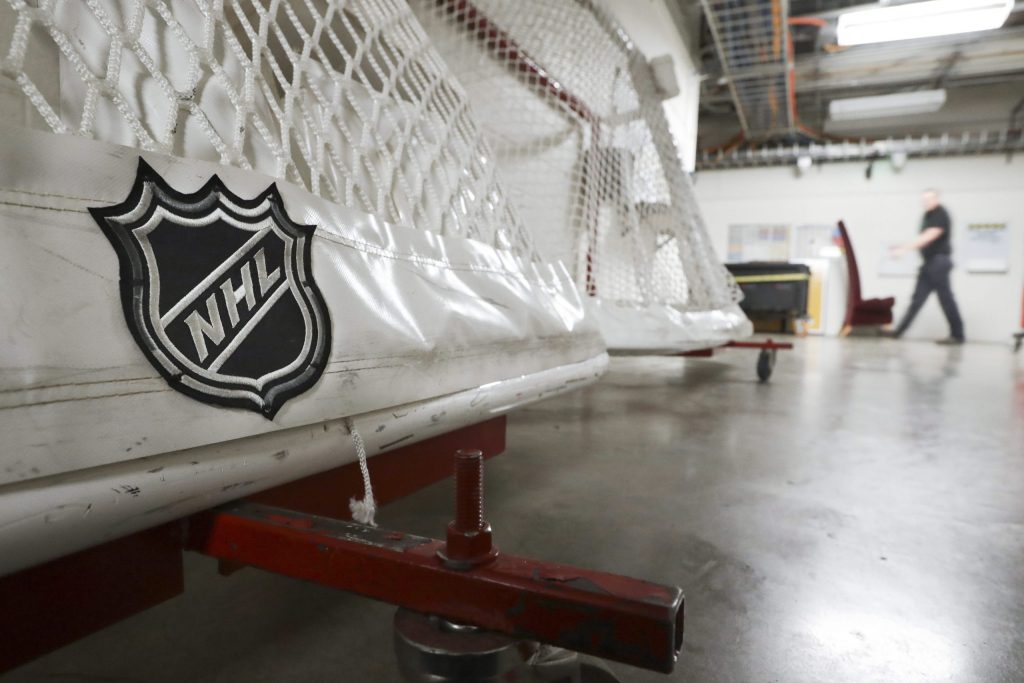‘An interesting time’: Cap squeezed NHL set to open free agency Saturday

Brad Treliving remembers a time when NHL general managers were basically done with free agency shortly after the window opened.
Big names quickly scooped up, roles filled, rosters largely set.
The COVID-19 pandemic — and the economic disaster that followed — has ensured, at least for the time being, that’s no longer the case.
Advertisement
“Five years ago, by July 2 you could hang the ‘Gone Fishing’ sign up,” said Treliving, GM of the Toronto Maple Leafs.
But with the salary cap having again only risen US$1 million — to $83.5 million for the 2023-24 season — as the league continues to recover from the financial hardships brought on by the coronavirus, teams have very little wiggle room with the market set to open Saturday.
Since the 2019-20 season, that was cut short by the pandemic, the cap has risen a total of $2 million.
“We’ve been living with the flat cap for awhile,” Vegas Golden Knights GM Kelly McCrimmon said. “It took awhile for teams, fans and media to really understand what the ramifications of the flat cap are.”
It was on full display at this week’s NHL draft. Very few trades were made, while the ones consummated involved roster players given away for draft picks — or in some cases, nothing — in salary dumps with an eye toward facilitating other moves.
Advertisement
There are also a number of star players available to be dealt, but the math so far hasn’t worked for Winnipeg Jets goaltender Connor Hellebuyck or San Jose Sharks defenceman Erik Karlsson, among a host of others.
“The trades that have been made this week, four years ago you wouldn’t have ever considered some of the players that have changed hands for the price they’ve changed hands,” added McCrimmon, who shipped veteran winger Reilly Smith the Pittsburgh Penguins for a pick in order to sign centre Ivan Barbashev to a contract extension.
“But that’s where understanding what the value of the cap space actually comes into play.”
Clubs are also locking up their restricted free agents sooner, often foregoing the shorter-term bridge deals that were so common a decade ago.
There are instead more and more eight-year extensions that give young players both security and more control as their careers progress.
Advertisement
That means fewer and fewer big names are making it to market.
“It feels like players want to sign sooner and get locked in, and that there’s just more available in trade,” Penguins president of hockey operations Kyle Dubas said. “I think that’s a result of the cap staying flat and teams needing to adapt and adjust and be able to find a way to be compliant, while also remaining competitive.”
Names like Matt Duchene and Blake Wheeler — bought out of their contracts by the Nashville Predators and Winnipeg Jets, respectively, on Friday — along with Dmitry Orlov, Ryan O’Reilly, Tyler Bertuzzi and Matt Dumba are among those poised to become UFAs on Saturday.
Good players, to be sure, but not at the level of the stars who once got wined and dined by teams desperate to make a splash.
“That’d be a great message to send to the agents,” Minnesota Wild GM Bill Guerin deadpanned. “They think the cap just went up $10 million.”
Advertisement
Last season started with almost two-thirds of teams using long-term injured reserve, meaning they could spend over the cap while players were sidelined.
“Everything’s squeezed, everything’s tight,” Treliving said. “You see more players extending for longer periods of time. There’s less availability of players (in free agency). I would just classify the market as, there’s some good players
“There’s quantity.”
Those players might also have to be patient in free agency. Nazem Kadri, for example, didn’t settle on the Calgary Flames last summer until signing a seven-year, $49-million contract Aug. 18.
“More and more teams, as the years have gone on, their salary cap space has dwindled,” Dubas said. “At the same time, you have your own young players coming up you want to re-sign.”
Advertisement
“Salaries continue to rise (and) there’s no cap growth,” added Treliving, who replaced Dubas as GM in Toronto. “Something’s gotta give. And that’s just the reality of it. Teams have had to make hard decisions, and it’s difficult.
“It’s just a function of the business.”
One area where there could be movement when free agency opens is on the RFA front, including in Toronto, where Auston Matthews and William Nylander will be eligible to sign contract extensions with a year left on their current deals.
But there’s no guarantee there will be immediate movement there — or with UFAs free to ink deals with all 32 teams.
“The free agency situation, it ebbs and flows,” Jets GM Kevin Cheveldayoff said of the market in general terms. “But I think you look at a lot of teams trying to lock up players as long as they can. Some players want to get locked up, some players don’t. Selling free-agent years is not what some players want to do.
Advertisement
“It’s an interesting time. It’s a fun time to be a part of it.”
This year’s fun begins Canada Day at noon ET.